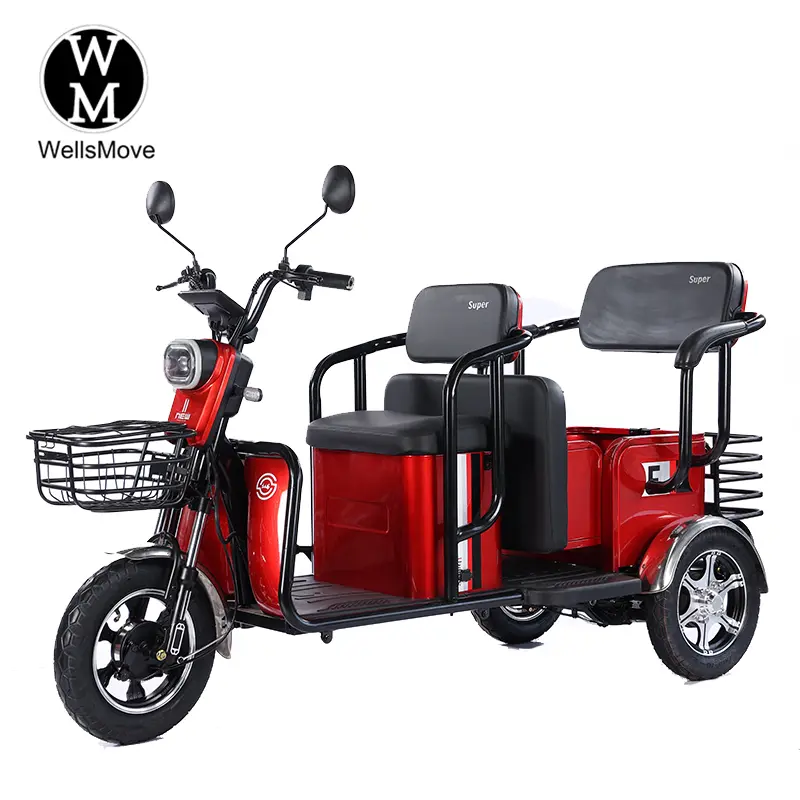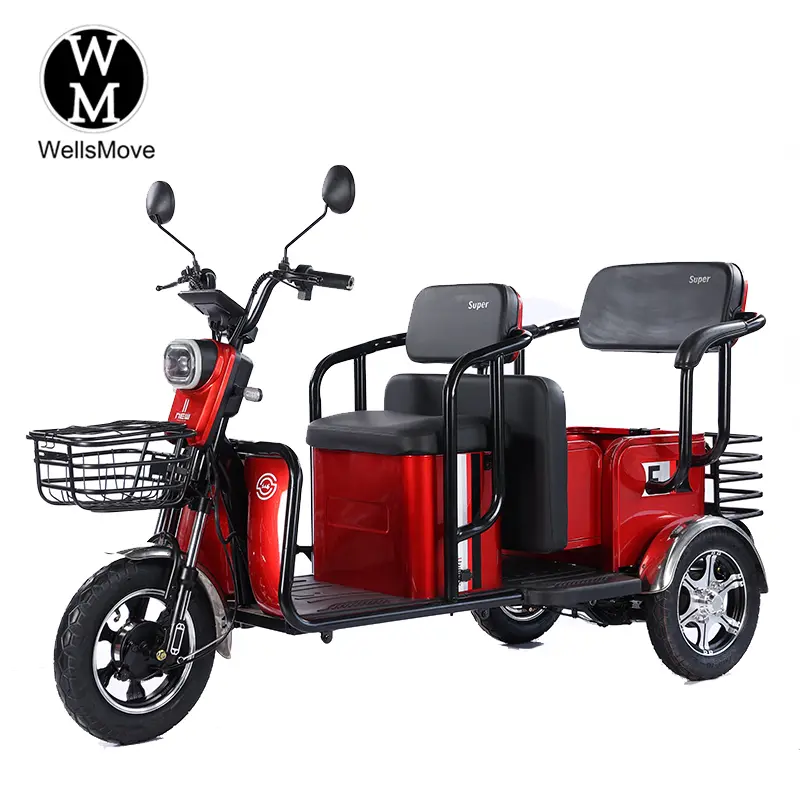Mobility Scooters Market Growth Forecast
Global Mobility Scooters Market Growth Forecast 2025-2031: A Golden Window of Opportunity for Export Companies
As the proportion of the global population aged 65 and over continues to rise, and as the “silver economy” transforms from a concept into a trillion-dollar market force, mobility scooters, as a core vehicle for meeting the independent mobility needs of seniors, are experiencing an unprecedented surge in growth. For companies developing export businesses, accurately grasping the growth trajectory of the global market and regional differentiation is key to seizing the international market. Based on authoritative industry data and policy developments, this article provides an in-depth analysis of the growth logic, regional opportunities, and future trends of the mobility scooter market.
I. Global Market: A Panoramic View from Steady Growth to Accelerated Expansion
The global mobility scooter market has entered a high-quality growth channel. Policy support, technological upgrades, and unleashed demand are creating a triple synergy, driving continued breakthroughs in market size.
Based on core data, global mobility scooter market revenue will reach US$1.153 billion in 2024, with production of approximately 1.785 million units and a global average market price of approximately US$628 per unit. Behind this scale lies the accelerating pace of global aging. China’s population aged 60 and over has reached 310 million, accounting for 22% of the total population. In developed countries in Europe and the United States, aging rates generally exceed 20%. This large population base has translated into rigid demand, driving the market into a period of acceleration. The global market is expected to maintain a compound annual growth rate of 6.2% between 2025 and 2031, with market revenue climbing to US$1.744 billion by 2031.
Among the segmented product structures, electrification and intelligentization are the core growth engines. In 2024, sales of electric scooters in China reached 2.1 million units, a year-on-year increase of 15%. Sales of low-speed electric vehicles reached 1.25 million units, a year-on-year increase of 12%. Although the electric wheelchair market is relatively smaller, its growth rate remains stable at 11%. This trend is also evident in the global market. Electric vehicles with improved range and lightweight designs already account for over 80% of the market share, and their share is still expanding. Notably, high-end smart products are becoming a new growth driver. By 2025, high-end mobility scooters featuring features like intelligent navigation, remote control, and automatic obstacle avoidance are expected to account for over 10% of global sales.
As a major global production and export base, China’s market dynamics have a profound impact on the global landscape. In 2024, the market size of China’s mobility scooter industry reached 52 billion RMB, a year-on-year increase of 13%. It is projected to exceed 60 billion RMB in 2025, with a growth rate accelerating to 15.4%. Regarding exports, Chinese companies’ international competitiveness continues to strengthen, with exports projected to exceed 2.2 billion RMB in 2025, achieving significant growth in both high-end European and American markets and emerging Southeast Asian markets.
II. Growth Drivers: Four Core Factors Reshaping the Market Landscape
The growth of the global mobility scooter market is not accidental; it is the inevitable result of the combined effects of demographic structure, policy environment, technological innovation, and consumption upgrades. The combined effect of these factors will continue to unleash market potential.
1. Population Aging: The Underpinning of Demand Expansion
Changing demographics are a core driving force behind market growth. Besides China’s 310 million seniors, Japan’s population aged 65 and over has surpassed 29%, Germany’s has reached 22%, and the US’s elderly population is projected to exceed 74 million by 2030. More crucially, the mobility needs of the elderly are escalating—young seniors aged 65-75 have significantly increased their demand for outdoor activities, while the over 44 million disabled and semi-disabled individuals have a strong demand for rehabilitation-focused mobility devices. This diversification of demand is driving the market’s expansion from single mobility devices to multiple scenarios, including medical rehabilitation and leisure travel.
At the same time, the boundaries of the consumer base are broadening. Amidst increasing urban traffic congestion, 30% of young and middle-aged people are using mobility scooters as a supplemental means of short-distance commuting, further expanding the market. This “all-age” usage trend is particularly pronounced in European and American cities, driving continued growth in market demand.
2. Policy Dividends: Market Regulation and Demand Stimulation
Policy support from major global economies provides clear guidance for market growth. At the policy and regulatory level, China issued the “Safety Technical Specifications for Low-Speed Electric Mobility Vehicles” in 2024, clarifying key indicators such as maximum speed and braking performance. It also implemented export licensing, promoting the industry’s shift from price competition to technological competition. The EU will classify low-speed electric vehicles as “micro-mobility vehicles” starting in 2026, allowing vehicles under 45 kilometers per hour to use bike lanes, clearing the way for market expansion.
In terms of demand stimulation, subsidy policies in various countries have been effective. Germany provides direct subsidies to seniors purchasing compliant mobility scooters and simplifies registration procedures; California, USA, has introduced insurance exemptions; and provinces such as Jiangsu and Zhejiang in China have each provided over 10 million yuan in total in subsidies. Beijing offers subsidies of up to 2,000 yuan per vehicle to eligible users. These policies have directly lowered the entry threshold for consumption. In 2024, driven by subsidies, sales of mobility scooters for seniors in Guangdong Province increased by 19% year-on-year, demonstrating the policy’s driving effect on the market.
3. Technological Innovation: The Core Engine of Product Upgrades
Technological iteration is reshaping the value of mobility scooters for seniors. In the powertrain sector, the maturity of lithium-ion battery technology has increased the range from 40km to 80km, while the use of solid-state batteries has reduced the battery cost share from 38% to 25%. Breakthroughs in lightweighting technology, such as the use of aerospace-grade carbon fiber materials, have reduced product weight by 37% while increasing dynamic load capacity by 15%. Sales of these products increased by 210% year-on-year in the first quarter of 2025.
Intelligent upgrades have become key to product differentiation. The integration of AI and IoT technologies has enabled mobility scooters to feature intelligent tracking, voice interaction, and fall alarms. Some high-end models can also integrate health monitoring with smart home control. The declining cost of 5G + Beidou positioning modules (from 1,200 yuan/unit to 780 yuan/unit) has further driven the adoption of intelligent features. The penetration rate of AI obstacle avoidance systems is expected to exceed 60% by 2028.
4. Channel Transformation: Online and Offline Integration Activates Market Vitality
The diversification of sales channels has injected new momentum into market growth. Online channels have become a key growth driver. In 2024, online sales of mobility scooters in China reached 42%, and are expected to rise to 48% in 2025. Orders for electric wheelchairs on platforms such as JD Health have increased by over 60%.
Offline channels are shifting towards experience-based and service-oriented channels. Brand stores in the European market have significantly increased customer conversion rates by offering services such as test drives and professional fit assessments. Chinese companies’ overseas after-sales service outlets have shortened repair response times to under 48 hours, strengthening brand trust. The integration of online traffic generation and offline experiences is reshaping the global sales landscape for mobility scooters.
III. Regional Market Insights: Differentiated Opportunities and Export Strategies
Global market growth is unevenly distributed. Different regions exhibit significant differences in policy environments, consumer preferences, and growth potential. Accurately targeting target markets is key to success for export companies.
1. European Market: A Mature Market Driven by Premiumization and Compliance
Europe is the core high-end market for senior mobility scooters worldwide, accounting for over 35% of the global market in 2024. Germany, France, and Italy are the main demanding countries. This market is characterized by extremely high requirements for product quality and compliance. All products on the market must obtain EU CE certification, covering multiple aspects such as electrical safety, mechanical safety, and radiation protection. Some countries also require FSC environmental certification.
In terms of consumer preferences, European users value both practicality and design. Large-size models launched by Chinese companies such as Zhejiang Weiling for the European market have been widely praised for their adaptability to the body shapes of local consumers. Their foldable and detachable design allows for easy storage in car trunks, perfectly suiting the travel habits of European families. In terms of policy, the EU will provide purchase subsidies for low-speed electric vehicles starting in 2026. Germany has already implemented measures such as simplified registration procedures. The European market is expected to achieve a compound annual growth rate of 7.1% from 2025 to 2030.
Marketing in the European market requires focusing on three key areas: first, product intelligence upgrades, integrating features such as voice control and automatic obstacle avoidance; second, strict compliance certification, and proactively developing a battery passport system to address the “New Battery Regulation”; and third, establishing a localized service network to meet users’ high expectations for after-sales response speed.
2. North American Market: A Growth Market with Both Standardization and Diversification
The North American market, centered in the United States, will account for approximately 28% of global sales in 2024. The market is characterized by a high degree of standardization and diverse demand. The US Federal Highway Administration (NHTSA) requires all mobility vehicles to comply with the National Motor Vehicle Safety Standards (FMVSS). States like California have also imposed additional regulations, such as helmet wearing and speed limits. While domestic brands such as iMobility and Invacare dominate the market, Chinese companies still have room to break through thanks to their competitive price-performance ratio. Chinese low-speed electric vehicles are priced at only half the price of similar golf carts in the US and come equipped with practical features like air conditioning and rearview cameras.
Demand is clearly stratified: the high-end market pursues medical-grade rehabilitation features, the mid-range market focuses on daily family use, and the low-end market prefers basic mobility devices. With the US Micro Electric Vehicle Safety Act exempting qualified vehicles from insurance premiums, the mid-range market is expected to become the fastest-growing segment, with a projected growth rate of 8.3% in 2025. Export companies can develop differentiated product offerings tailored to different demand levels while focusing on online sales channels, leveraging platforms like Amazon to reach end users.
3. Southeast Asia: An Emerging Blue Ocean with High Growth and High Potential
Southeast Asia is the fastest-growing emerging market for senior mobility scooters globally, with year-on-year growth reaching 12.5% in 2024. Thailand, Vietnam, and Malaysia are key growth drivers. The core drivers of this market are a demographic dividend and policy support. Southeast Asia’s population over 60 is growing at an annual rate of over 4%. Thailand allows low-speed electric vehicles to use motorcycle license plates, and Vietnam has included them on its “zero tariff” list, creating favorable conditions for Chinese companies to export.
In terms of consumer characteristics, Southeast Asian users are primarily price-sensitive, with cost-effective products priced under 5,000 yuan accounting for over 70%. They also place high demands on battery life and road adaptability. To address this, Chinese companies can launch waterproof models suitable for tropical climates, enhance battery heat resistance, and simplify user interfaces to lower the barrier to entry.
Notably, Southeast Asian infrastructure is rapidly improving. Urban accessibility renovations in countries like Vietnam and Indonesia have already begun, and this is expected to generate tens of millions of new demand by 2027. Exporters should seize this opportunity to establish channel advantages through partnerships with local distributors and leverage cross-border e-commerce platforms to expand their brand influence.
4. Other Regions: Complementary Markets with Differentiated Demand
In addition to the core regions mentioned above, developed markets such as Japan and Australia, as well as emerging markets such as the Middle East and Africa, also present unique opportunities. The Japanese market places extremely high demands on product refinement, requiring compliance with JIS certification standards and preferring compact, lightweight models. Australia prioritizes outdoor adaptability, placing specific demands on gradeability and range. The Middle Eastern market favors high-end, customized models, demanding high design and comfort features.
Although these markets are relatively small, they offer lower competition and attractive profit margins. Export companies can adopt a strategy of “focused breakthroughs and precise adaptation,” developing customized products tailored to the climate characteristics, usage scenarios, and policy requirements of different regions, thereby achieving a diversified global market presence.
IV. Challenges and Solutions
Behind the opportunities presented by market growth, companies also face multiple challenges, including compliance barriers, intensified competition, and rising costs. Only by addressing these challenges precisely can they seize the benefits of growth.
1. Core Challenge: The Triple Test of Compliance, Competition, and Trust
Compliance risk is the primary obstacle facing export companies. Certification standards vary significantly across countries and regions. The EU requires CE certification and a battery passport, the US requires FMVSS certification, and Pakistan mandates FSC certification and a certificate of compliance. Failure to meet any of these requirements can result in shipment detention or return. China’s new export licensing policy has further tightened qualification requirements, requiring only companies listed in the Ministry of Industry and Information Technology’s announcement and possessing CCC certification to export, effectively cutting off export channels for unauthorized entities.
Market competition is fierce. On the one hand, leading global brands such as iMobility and Kartoo are leveraging their localization advantages to consolidate their market share. On the other hand, some Chinese companies continue to exploit market share through low-price dumping, solidifying the low-end label of “Made in China.” Cost pressures are also significant. Factors such as fluctuating lithium battery raw material prices and rising ocean freight costs continue to squeeze profit margins.
Furthermore, insufficient brand trust is a common pain point for many companies. Overseas users still have skewed perceptions of product quality, and a lack of after-sales service networks further exacerbates this trust crisis. The density of repair outlets in third-tier cities is only one-fifth of that in first-tier cities, making it difficult to meet user after-sales needs.
2. Breakthrough Strategy: Collaborative Upgrades in Products, Compliance, and Services
The key to addressing these challenges lies in building core competitiveness through product differentiation, proactive compliance, and localized services. On the product front, targeted innovation is required for different markets: developing intelligent, high-end models for Europe, incorporating carbon fiber lightweighting technology and AI obstacle avoidance systems; launching cost-effective, basic models for Southeast Asia, enhancing range and durability; and customizing FMVSS-compliant safety features for the North American market, such as rollover mitigation and emergency braking systems.
Compliance planning must be proactive. Companies should establish a global certification database, track national standards developments in real time, and initiate the certification process 6-12 months in advance. For the EU market, for example, CE certification, FSC certification, and battery passport applications must be simultaneously implemented to ensure product compliance upon launch. At the same time, strict compliance with export license management requirements must be implemented, and the overseas service network must be strengthened to ensure a minimum spare parts inventory rate of 20% and a repair response time of no more than 48 hours.
Localized services are key to building brand trust. Zhejiang Weiling’s experience demonstrates that detailed improvements, such as a crutch storage container designed for the European market, significantly boost user acceptance. Establishing regional warehousing centers overseas can shorten delivery times by 30% while reducing logistics costs. Furthermore, content marketing and social media operations, highlighting product development stories and user cases, can effectively enhance a brand’s international influence.
Post time: Oct-15-2025



